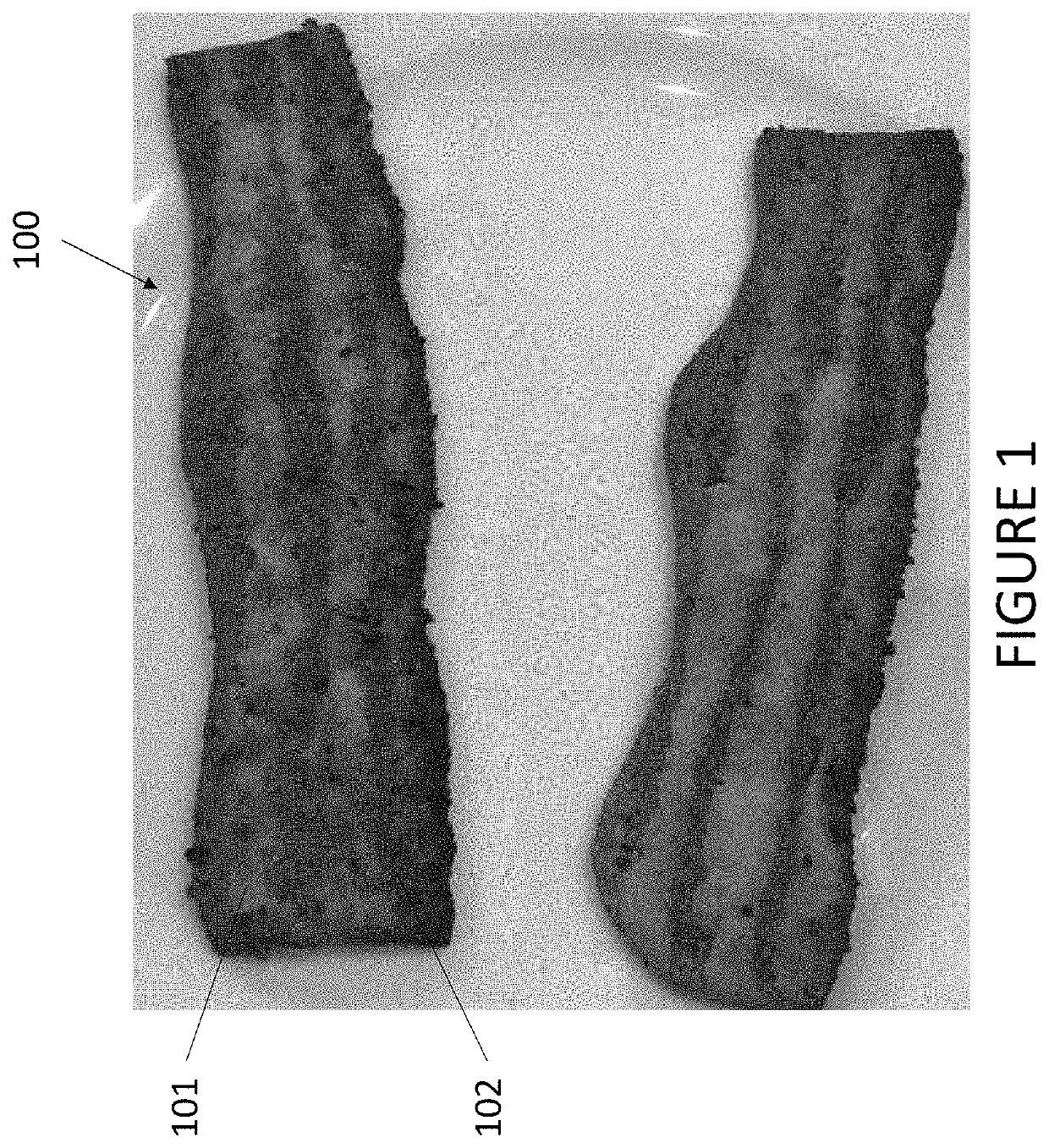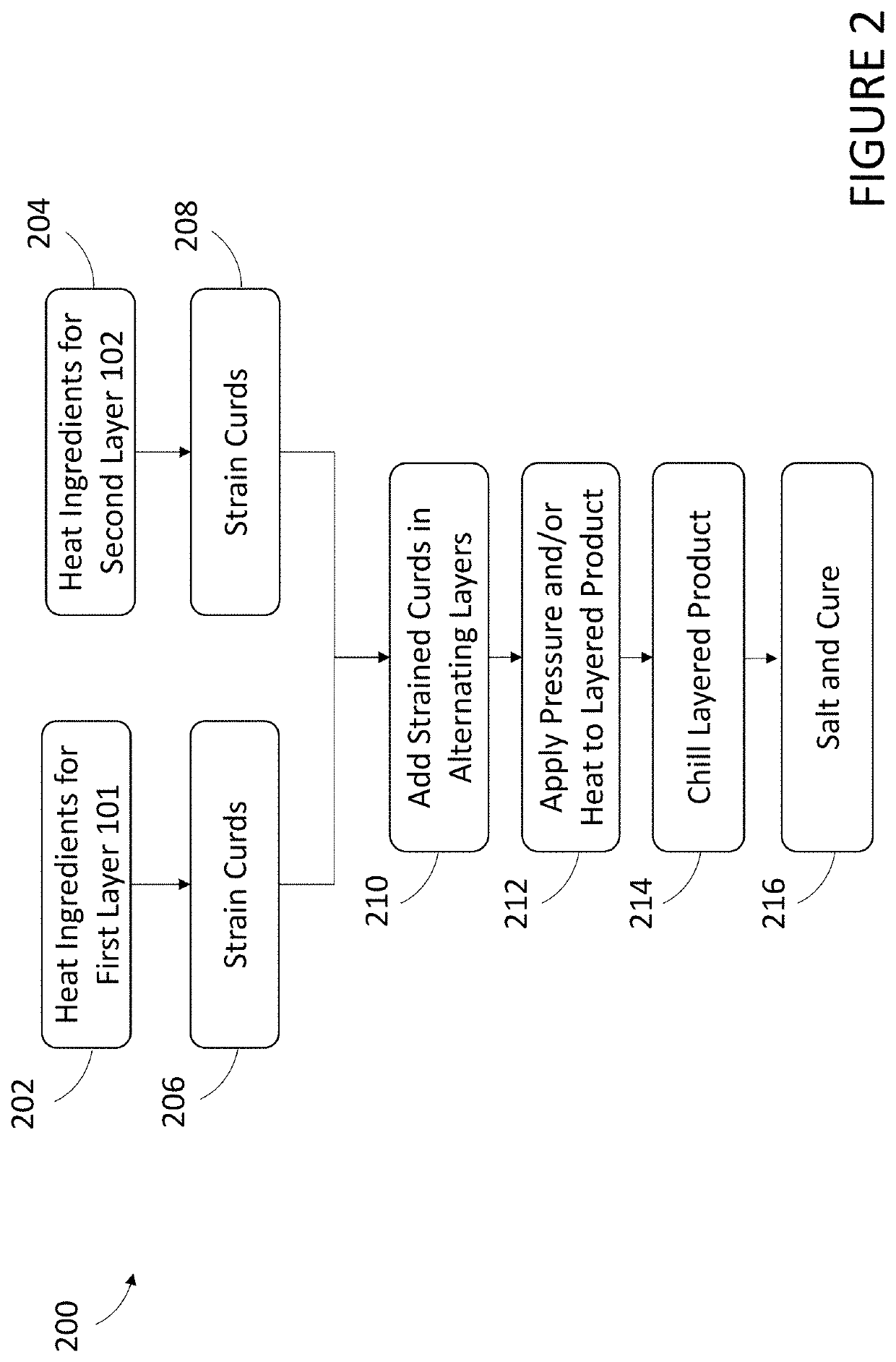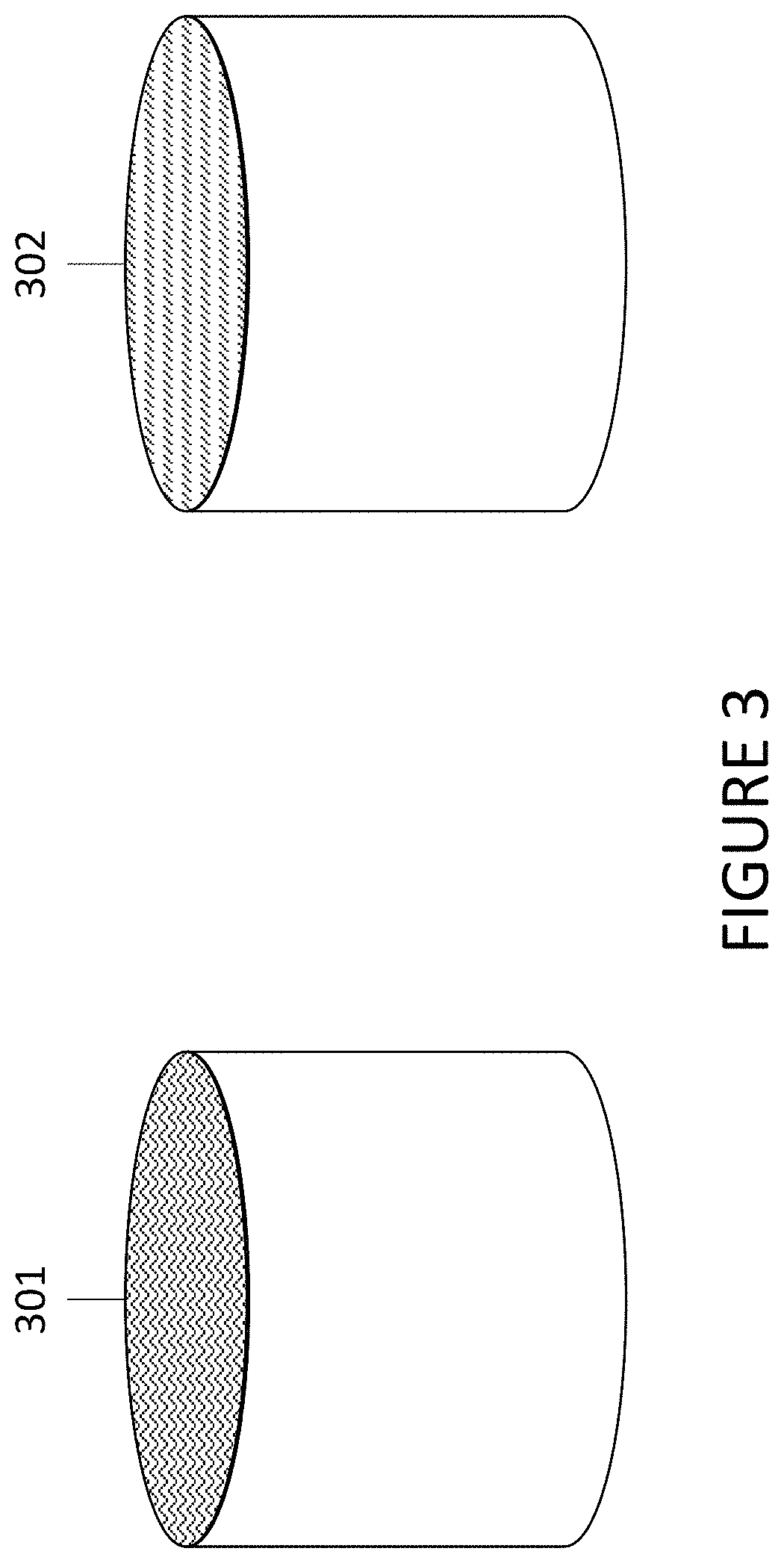Composition and method of making plant-based food products
a technology of plant-based food products and compositions, applied in the direction of protein foodstuff compositions, vegetable protein working up, protein working up by texturising, etc., can solve the problems of fragile tofu, no commercial food provider has developed a tofu-based bacon analog, and difficult production process
- Summary
- Abstract
- Description
- Claims
- Application Information
AI Technical Summary
Benefits of technology
Problems solved by technology
Method used
Image
Examples
example 1
Tofu-Based Bacon Product
[0053]Alterations and variations to ingredients and method may be made to this example in order to change the volume, qualities of the product either slightly or to create a new product based on the enriched and seasoned, molded tofu curd invention. The basic process to create a tofu-based bacon product are shown in FIG. 2.
[0054]The first layer 101 may include: 4 gals soy milk, 1800 grams palm oil fat, 175 chicken yeast, and 40 grams allulose. The second layer 102 may include: 5 gallons soy milk, 60 grams IFC Warm Red, 225 gms SM yeast, and 40 gms allulose. Additional ingredients may include 2 Tbsp. citric acid, 150 grams salt divided into three 50 gram batches, 90 gram (6 Tbsp.) maple syrup, and / or 60 grams coarse ground pepper.
[0055]To begin, the ingredients are assembled. The oven is preheated to a temperature of less than or equal to 220° F. or less than or equal to 200° F. Perforated mold pans may be provided with rippled screens and linen or cheesecloth...
example 2
Contents by Percent Mass of a Sample of Tofu-Based Bacon Product
[0078]
TABLE 1Tofu-Based Bacon Product Contents by Percent MassTestUnitResultMethodFat Total: Soxhlet%18.01LT6023Moisture%63.45LT6026Protein: Kjeldahl%13.1EPA Method 8270NaCl Content%2.08LT6034Water Activity—0.9744LT6042
[0079]The overall contents of a specific sample of the tofu-based product 100 determined by a test in an independent lab are shown in Table 1. Using the LT6023 method, the overall fat content of a specific sample of the product 100 was determined to be 18.01% by mass. With the LT6026 method, the moisture content was determined to be 63.45% by mass of a specific sample of the product 100. Using the EPA method 8270, a specific sample of the tofu-based product 100 was found to have 13.1% protein by mass. The sodium chloride content of a specific sample of the product 100 was determined to be 2.08% by mass using the LT6034 method. The overall water activity was determined to be 0.9744 utilizing the LT6042 met...
PUM
| Property | Measurement | Unit |
|---|---|---|
| temperature | aaaaa | aaaaa |
| temperature | aaaaa | aaaaa |
| temperature | aaaaa | aaaaa |
Abstract
Description
Claims
Application Information
 Login to View More
Login to View More - R&D
- Intellectual Property
- Life Sciences
- Materials
- Tech Scout
- Unparalleled Data Quality
- Higher Quality Content
- 60% Fewer Hallucinations
Browse by: Latest US Patents, China's latest patents, Technical Efficacy Thesaurus, Application Domain, Technology Topic, Popular Technical Reports.
© 2025 PatSnap. All rights reserved.Legal|Privacy policy|Modern Slavery Act Transparency Statement|Sitemap|About US| Contact US: help@patsnap.com



